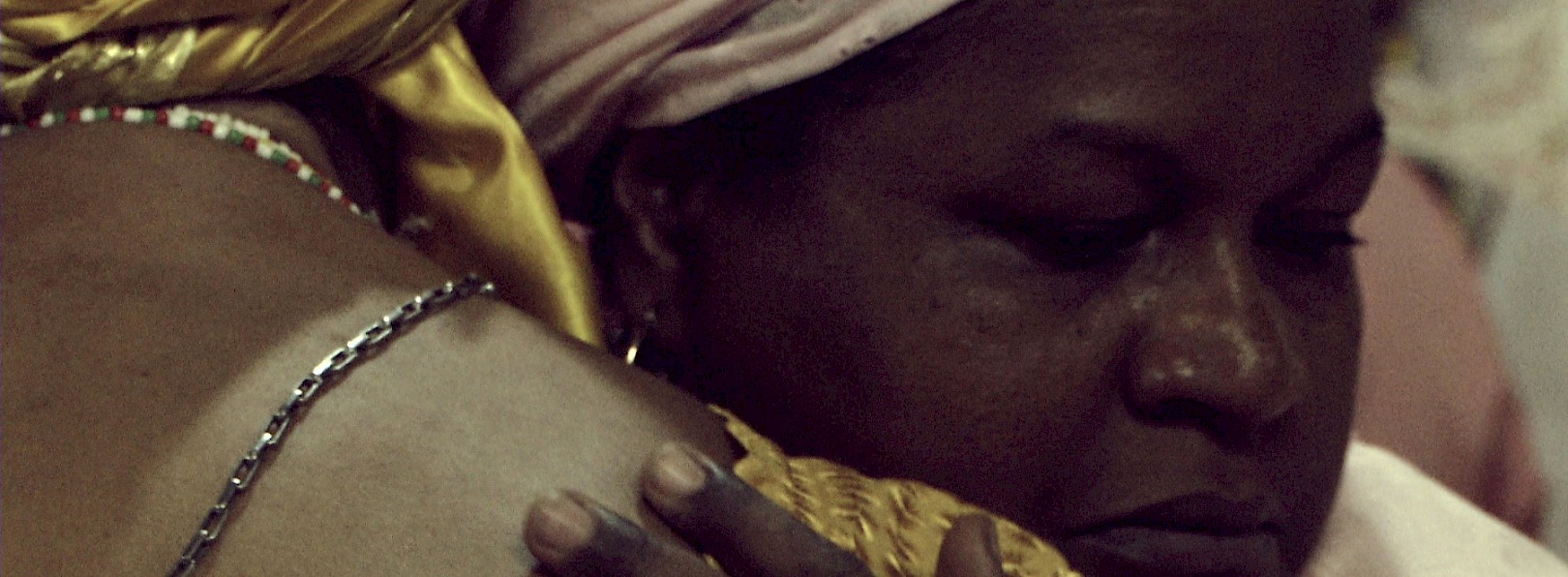Terreiro Xambá
23:06
Xambá. Afro Brazil. Oxum’s Ceremony at Terreiro de Xambá (Toque de Oxum no Terreiro de Xambá). Babalorixá Ivo da Xambá. Yalorixá Mãe Lourdes da Xambá. Xambá Community. Bongar Group. Olinda city. Pernambuco. February
Toque de Oxum
This is Ová’s house, Iansã the mother of winds. But people at the terreiro are surprisingly wearing bright yellow. There’s an abundance of water and sweets. Petals drop from hands onto the ground: it is February, the month when Mother Oxum receives flower offerings!

“Ora Yê Yé Ô!”
Greeting to Oxum
She is the one in Father Ivo’s head: he runs the house alongside Mother Lourdes, Iemanjá’s daughter. The Babalorixá is Mother Biu’s son, and she is the second Yalorixá at Terreiro Santa Bárbara.
And, in order to approach this Afro-Brazilian religion that’s been a part of Olinda’s history for seventy years, first one must ask Mother Biu’s permission at the Ice Gate. Ivo’s mother, also his mãe de santo, is an unforgettable character at Xambá: she resisted enough to hold her faith on her hands, even when the gates to the terreiro were closed down by prejudice. It was the strength of this black and divorced woman that kept a whole Candomblé Nation together in a map drawn by the feet of those who walk because they believe.

The Xambá or Tchambá people came from the borders of Nigeria and Cameroon, natives from the Benue River in Africa. A nation that was spilled over the waters of the city of Maceió through 1920, when Babalorixá Artur Rosendo Pereira had to flee to Recife, taking Xambá along with him. From this guide’s hands came Maria Oyá and Mother Tuila, women who had to control the volume of their chants in times of oppression. In 1938, while Brazil was going through hard political times , Maria Oyá found herself forced to shut down the terreiro.
It was Mother Biu’s stronghold that reopened the doors and then firmed the grounds for her people in Olinda, on a street now called Severina Paraíso da Silva: her own name that no other map can try to erase.

Her son, Ivo, planned the creation of a memorial as a safeguard for this, which is the third urban quilombo in Brazil. In 2002, he managed to pull it off by organizing a collection of 800 photographs mainly from his mother’s personal archives: festivities, family photos, and meetings of Xambá participants. At parties or days when there’s music for the orixás, those visiting the house can see these images while the drums roll.
It is for Exu, Ogum, Odé, who are Oxossi, Nanã, Bêji: Cosme, Damião and Doúm. Obaluiaê, who is the younger Omolulu. Ewá: the feminine orixá for beauty, yellow and pink and purple. Obá and Xangô, Oyá, Oxum, Iemanjá, Orixalá, who is the father of most of them and dresses in white. Afrekête: feminine orixá with colorful beads with dahomean vodum origins, later incorporated by Yorubá culture. It is Candomblé with an accent of Xambá.
In times of celebration, the instruments are usually touched by the hands of people belonging to Grupo Bongar; since 2001, all six members of Terreiro Xambá have been researching and echoing the musicality of their nation’s rituals and public presentations.
"This Candomblé guides me through life”
Guitinho Bongar

Be it Ciranda, Coco, Candomblé, Maracatu – it is Xambá. What they live in their faith and learn from the elderly… overflows in melodies. Through Mother Biu’s pulse, they have learned that a nation is not extinguished: one must search for the art to keep it vibrating somewhere in the world! If she kept images in drawers, they would take her sound for a walk. Therefore, someday someone else will eventually recognize the noise from the African river that sews the world together and, in dance, they will join in caring for these waters.
